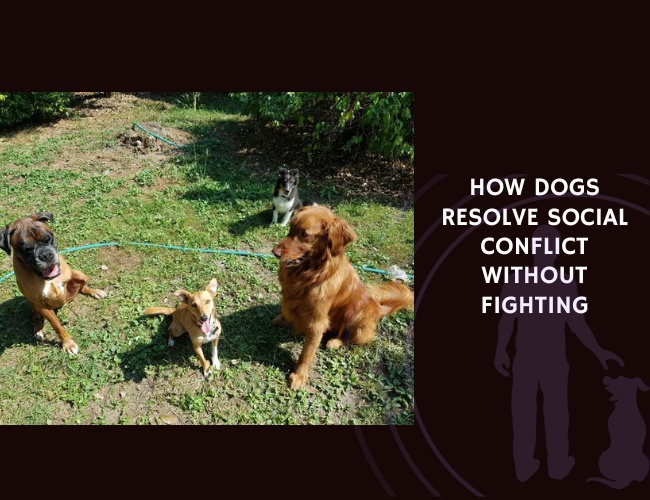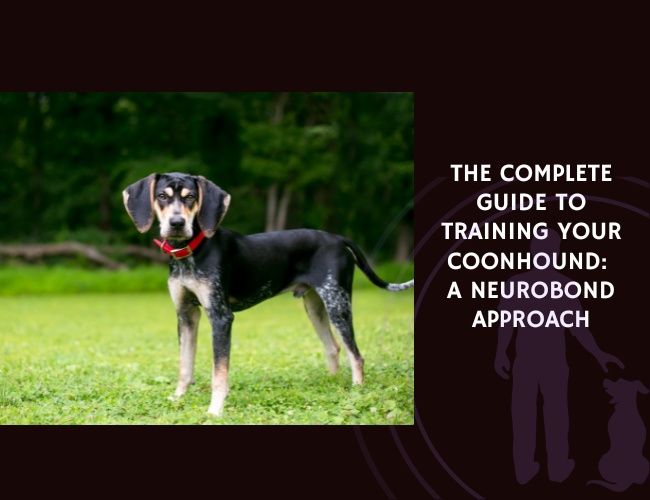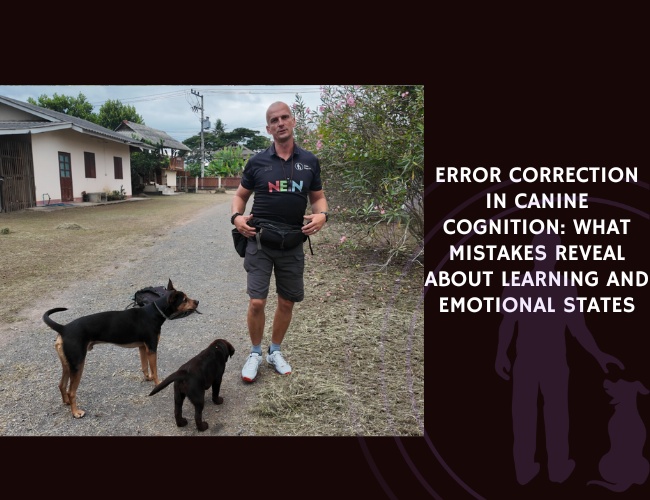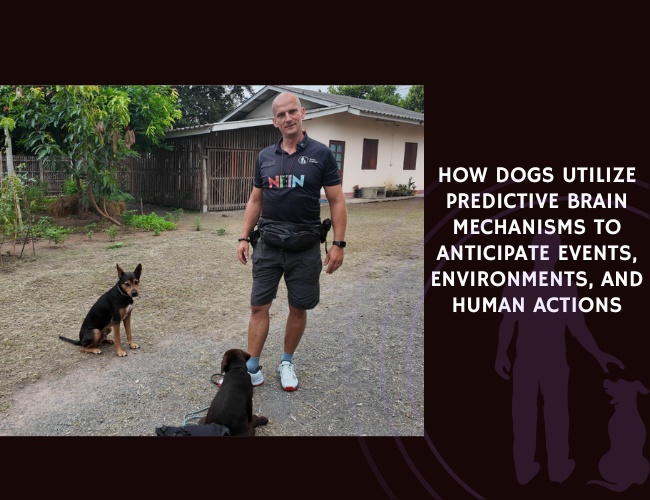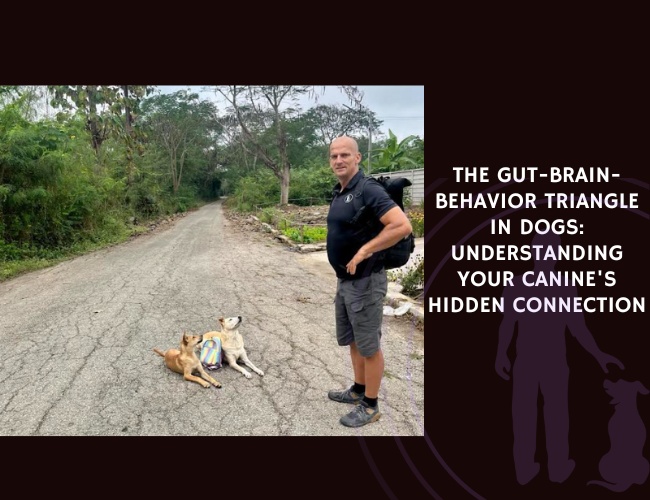Introduction: Understanding Canine Conflict Resolution
How Dogs Avoid Fighting: Peaceful Problem-Solving
Have you ever seen two dogs freeze, look away, or lick their noses when meeting for the first time? These small actions are not random. In fact, they are powerful tools dogs use to stay safe and friendly with one another! Dogs are naturally wired to avoid fighting. Most social conflicts between dogs are settled through peaceful signals instead of aggression or loud barking.
The Magic of Calming Signals
Dogs communicate much more than just excitement or fear. They have a set of special behaviors called calming signals. These signals help dogs show others that they want peace, not trouble. Common calming signals include:
- Blinking
- Nose licking
- Lip wiping
- Head turning
- Yawning
- Sniffing the ground
These actions are designed to let another dog—or even a human—know that there is no need to worry. Dogs use them to calm themselves, calm others, and prevent disagreements from getting out of hand. Each signal has its own purpose and works best in certain situations, depending on the dog’s relationship and mood.
Why This Knowledge Matters
Understanding calming signals is super important for owners, trainers, and anyone who spends time with dogs. When we recognize these signals, we can help dogs feel safe and supported 🙌. It also helps us stop conflicts before they begin, making playgroups and walks much more enjoyable for everyone. If calming signals are ignored, stress and misunderstandings can build up, leading to unwanted behaviors or even fights.
By paying attention to the way dogs “talk” with their bodies, we can build stronger, more compassionate relationships with our four-legged friends.
Next, we’ll explore what calming signals really are and how to tell them apart from other behaviors.
What Are Calming Signals? Defining the Communication
Understanding Calming Signals
Calming signals are special behaviors dogs use when they want to show peaceful intentions. These patterns help dogs avoid fights and ease tensions with other dogs or people. Picture a group of dogs in a park—when one feels uneasy, it might lick its nose, turn its head, or even yawn. These actions are more than random habits; they are tools that help dogs say, “I don’t want trouble.”
These signals keep social life smooth and friendly for dogs, both in the wild and at home. Noticing calming signals lets trainers and owners better support their dogs’ emotional needs and avoid misunderstandings.
Different Types: Appeasement, Displacement, and Submission
Not all signals mean the same thing. It helps to know the difference:
- Appeasement signals try to lower aggression from another dog. For example, a soft blink or gentle turning away makes it clear that a dog means no harm.
- Displacement behaviors don’t match the current situation and can look odd—like sniffing the ground during a tense moment. These may give a stressed dog time to think and relax.
- Submission signals communicate lower status, such as rolling onto the back. While related, these are not always calming signals but often go together.
Sometimes, a single behavior can have more than one use, depending on the setting.
The Role in De-Escalating Tension
Calming signals are a dog’s natural way to keep things cool 😌. When tension rises, these behaviors act like a social “pause button.” If another dog or a person responds kindly—maybe by backing off or calming down—conflict is often avoided.
Learning about these signals helps us recognize our dogs’ feelings and react with understanding, making social interactions safer and more enjoyable for everyone.
Let’s look closer at how to spot calming signals in action and what they look like.
The Catalog of Calming Signals: Recognizing the Signs
Common Calming Signals
Dogs have a special way of keeping peace by using calming signals. These can include blinking, nose licking, lip wiping, head turning, yawning, and sniffing. At first glance, these signals may seem like normal dog behaviors, but each one carries a message.
- Blinking: When a dog blinks slowly, it shows they are relaxed and not looking for trouble. Rapid or exaggerated blink patterns can also send a “peaceful” message.
- Nose Licking: A quick flick of the tongue to the nose acts as a sign to lower tension. It is common in situations where a dog senses stress or feels a need to calm others.
- Lip Wiping: Rubbing the mouth or nose against something may offer reassurance during tense moments.
- Head Turning: Turning the head away from another dog or person can break eye contact and signal the wish to avoid conflict.
- Yawning: While dogs do yawn when tired, they also use yawning as a calming gesture during exciting or tense events.
- Sniffing: Sniffing the ground, even when nothing seems interesting, often means the dog is uneasy and is trying to calm the environment.
Visual Cues and Body Language
To really understand your dog’s intent, notice their whole body. Calming signals are often paired with changes like a curved body posture, lowered tail, or side-stepping rather than walking head-on. These stances help dogs show they mean no harm, making social situations smoother.
Why Recognizing These Behaviors Matters
Spotting these signals early can help owners and trainers avoid tense situations and reduce stress for their dogs. By learning to read and respect these cues, you support your dog’s emotional health and help prevent conflicts. This builds a friendlier and safer world for both dogs and people.
Recognizing these signs is just the start of understanding your dog’s choices in different situations.
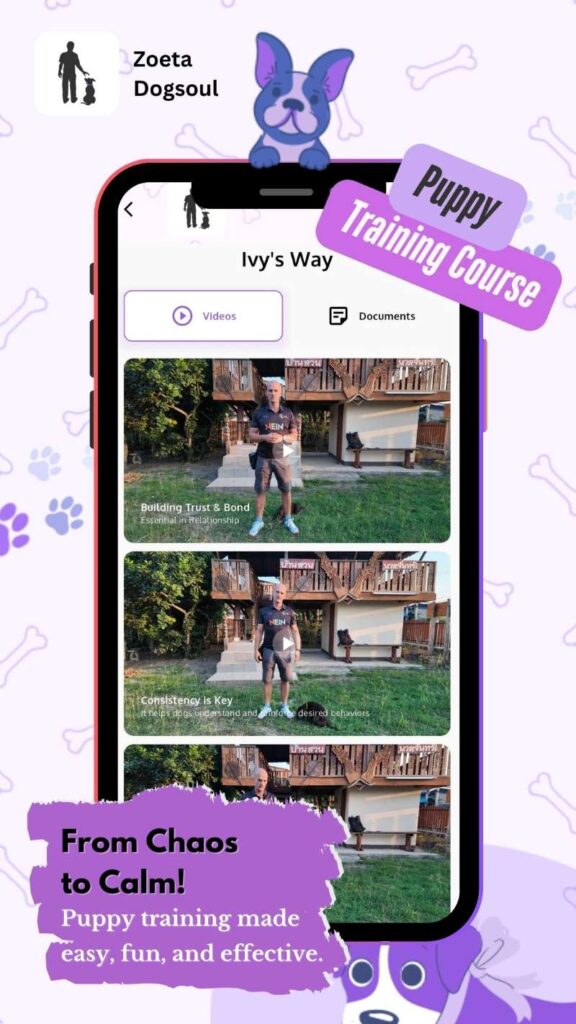
Context Matters: When and Why Dogs Use Calming Signals
The Power of Context in Dog Communication
Not every nose lick or yawn from your dog means the same thing. The effectiveness and interpretation of calming signals greatly depend on the situation and the relationship between the dogs involved. For example, a head turn between friendly dogs during play says “I’m okay, let’s keep it gentle,” while the same gesture between wary strangers might signal “I’d like to avoid trouble.”
The closeness of their relationship shapes the meaning too. Dogs that know and trust each other might use subtle signals, like soft blinking or gentle sniffing, because they don’t expect trouble. In tense introductions, a dog may choose to yawn or look away to show no threat and encourage peaceful interaction. A confident dog may stand with a curved body posture, inviting peace, while a less socialized dog could offer more frequent appeasement signals.
Real-Life Scenarios: When Dogs Use Calming Signals
You’ll often see calming signals in dog parks or busy streets. Imagine two dogs meeting on a walk. One might sniff the ground or turn its head to the side, signaling, “I want to keep things friendly.” During play, dogs use these signals to pause or lower the energy if things get too wild. If a new dog appears unsure, licking their lips or yawning may help prevent misunderstandings or escalations.
Influencing Factors in Signal Choice
Several factors decide which signals a dog uses, such as the other dog’s body language, previous social experiences, and the environment. Dogs with positive early socialization tend to offer and interpret these signals more clearly, while those with tougher backgrounds might miss or overuse them. Noise, crowds, or leashes can also limit what signals are effective or even possible.
By watching context and understanding these subtle cues, owners and trainers can better support dogs in communicating safely and confidently.
This understanding will help unlock the next layer of why dogs behave as they do, especially focusing on where these behaviors come from deep inside their minds and bodies.
The Neurobiological Foundations of Calming Signals
Early Socialization and Experiences
From the time puppies are born, the world they grow up in shapes how they interact with others. Early socialization—the process of meeting other dogs, people, and new environments—teaches dogs how to read and use calming signals. Dogs raised in a calm and stable environment tend to develop these skills well. They learn how to use signals like nose licking or yawning to show non-aggression or soothe tense encounters.
On the other hand, dogs that have negative experiences or little contact with others might struggle. These dogs may not recognize key behaviors or might use signals that go unnoticed or ignored by their peers. This lack of understanding can lead to more conflict and stress for everyone involved.
Stress Responses and Behavior
When dogs feel stressed or uneasy, their bodies react automatically. Some calming signals, like blinking or head turning, happen almost without thinking. These reflexive actions are part of a dog’s way to calm themselves and others in tough situations. But dogs do not just react—in some cases, they act thoughtfully. For example, a dog may choose to turn away or sniff the ground to let another dog know they do not want to fight.
This mix of both reflexive and planned responses helps dogs navigate social situations. Some signals are automatic, coming from the brain’s stress centers, while others require the dog to pay attention and choose the right move for the moment.
Communication: Intentional vs. Reflexive
A big question is whether calming signals are always purposeful. The answer seems to be both yes and no. Sometimes, dogs use these behaviors intentionally—like a dog slowly blinking to say, “I mean no harm.” But at other times, signals like yawning may just be a natural reaction to a tense moment.
Whatever the reason, the balance between intentional and reflexive signals means that dogs can adapt to many social situations. This skill is vital for keeping peace and safety in dog groups and helps guide trainers and owners in supporting their pets.
Understanding these foundations sets the stage for how dogs in different settings—wild or at home—use calming signals to get along with their friends and family.
Silent. Subtle. Strong.
Peace Before Power. Dogs don’t need teeth to speak. In the space between action and reaction, they blink, yawn, turn away—and in doing so, they rewrite the rules of conflict. Their world isn’t built on dominance, but on emotional finesse.
Communication Over Control.
Where humans shout, dogs pause. They send signals instead of ultimatums. Sniffing the ground, licking their nose, sidestepping tension—not because they’re weak, but because they’re wise. Every signal is a decision: peace, not provocation.
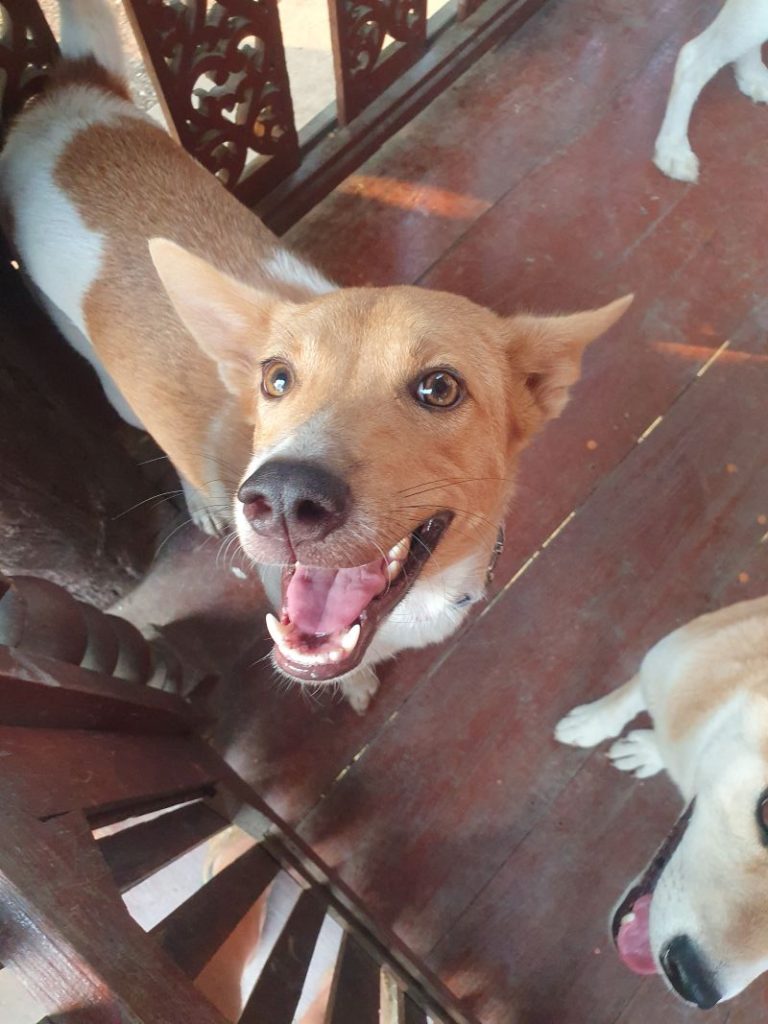
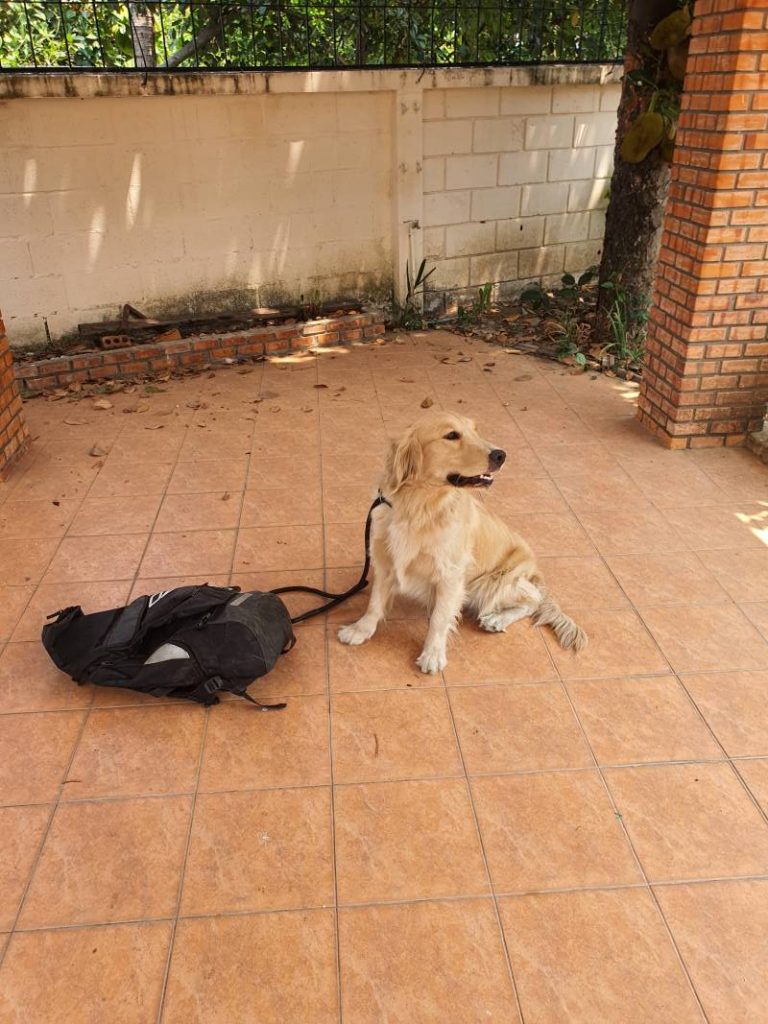
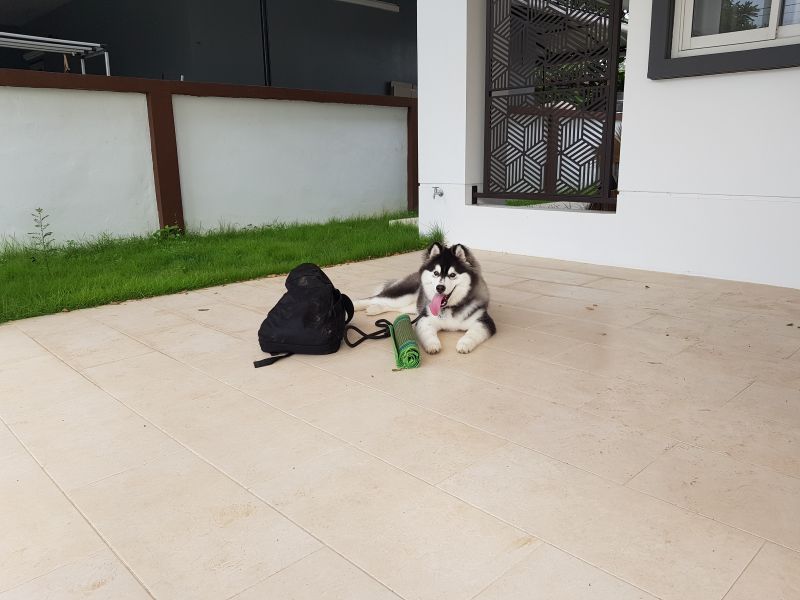
The Language We Keep Missing.
While we demand obedience, they’re offering understanding. But only those who watch can hear it. The true skill lies not in training the dog—but in learning the language it’s already using.
Calming Signals in Different Dog Populations
Comparing Free-Ranging and Domestic Dogs
Dogs across the world rely on calming signals to maintain peace, whether they live in homes or roam free. Free-ranging dogs often belong to loose social groups, where careful communication keeps things friendly. In these settings, calming signals—like nose licking, yawning, and head turning—help dogs prevent fights instead of starting them 🐾. Since these dogs meet many unfamiliar peers, they tend to send frequent, clear signals to avoid trouble.
Domestic dogs, by contrast, often interact with a smaller, more stable group. They might use calming signals less often simply because they already know their fellow dogs and humans. However, in new places like parks or training classes, domestic dogs may need to rely on these signals more—especially if they feel uncertain about the situation.
Influence of Social Dynamics
The way dogs use calming signals can change depending on their group’s social setup. In larger, mixed groups, communication becomes extra important. Dogs that understand calming signals well are likely to avoid serious conflicts and feel more comfortable with others. In multi-dog households, you might notice subtle behaviors—like sniffing the ground or turning away—whenever things get tense.
Individual temperament also matters. Some dogs are naturally skilled at using or interpreting signals. Early social experiences play a big role in this skill. Dogs who’ve had lots of friendly interactions tend to be better communicators.
The Evolutionary Role of Calming Signals
Long ago, dogs that could stop a fight before it happened were safer from harm. Calming signals helped groups stay peaceful and work together. This skill made it easier to find food, raise puppies, and avoid injuries. Today, these ancient instincts help both free-ranging and pet dogs stay safe and happy within their groups.
Understanding these behaviors lets humans support their dogs’ well-being and create a more peaceful home environment.
Recognizing and Respecting Calming Signals: A Guide for Humans
Spotting the Signs
Learning to notice calming signals in dogs is like understanding a new language. Simple actions like blinking, nose licking, head turning, yawning, and sniffing are more than everyday behaviors—they are ways for dogs to say, “I’m peaceful.” These signals can be subtle and quick, so practice careful observation. Watch for these behaviors during dog-to-dog greetings, play sessions, or even when your dog is meeting new people. Remember, a curved body posture often goes hand in hand with calming signals. Seeing these signs early is essential to preventing misunderstandings and stress.
Responding with Respect
When a dog uses calming signals, it’s asking for space, gentleness, or patience. You can respond supportively by:
- Slowing down your movements
- Giving your dog more space
- Avoiding direct eye contact
- Using a calm, friendly voice
If your dog starts to look away, yawn, or lick its nose, it may be feeling worried or crowded. Take a step back and let the dog regain comfort. This approach is professional, compassionate, and lets your dog know it is heard and safe. 🐾
Avoiding Common Pitfalls
Many owners misinterpret these gentle signals as stubbornness or “bad behavior.” Pressuring or ignoring dogs when they display calming signals can lead to extra stress or even aggression. Avoid raising your voice or forcing interactions. Instead, take these cues seriously; your dog is trying to communicate.
Respecting your dog’s social signals helps build trust and keeps everyone safe. With continued learning and practice, you will grow as a confident, supportive partner for your canine friend.
Next, let’s consider how missing or misreading calming signals can have lasting effects for your dog’s well-being.

The Consequences of Misinterpreting or Ignoring Calming Signals
Escalating Tension and Canine Stress
Dogs use calming signals—like blinking, head turning, and nose licking—as their primary way to keep the peace. When these tiny warnings are missed or misunderstood by humans, conflict can quickly grow. Imagine two dogs meeting at the park: one turns its head and yawns, hoping to show it’s not a threat. When the other dog’s person pulls the leash tighter, not noticing this cue, the situation can get tense. The dogs might bark or snap, simply because both feel their signals went unheard. Over time, this stress can build up, making dogs more anxious in social settings.
From Misunderstanding to Problem Behaviors
If people ignore these signals over and over, dogs may develop more serious issues. Here are some possible behavioral problems:
- Increased reactivity—barking, lunging, or growling more often
- Developing anxiety around people, dogs, or certain places
- Avoiding social interaction, even with familiar faces
Dogs that feel their peaceful communications are fruitless might stop using calming signals altogether. Instead, they could jump straight to more extreme actions, simply for self-protection.
Real-World Examples and Impact
Real-life stories show how missing a dog’s calming signals can turn simple situations into problems. For example, a dog in a training class keeps licking its lips when a person comes close. The trainer, not recognizing this cue, keeps pushing the dog to interact. Eventually, the dog may bite—not because it is mean, but because it feels it has no other choice.
Why Recognition Is Essential
Understanding and respecting these silent signals supports better communication and trust between dogs and humans. When people observe calmly, give space, and adapt their actions, dogs feel safer and more willing to connect. This compassionate and professional approach keeps interactions positive and prevents unnecessary stress—for everyone involved.
Understanding the way dogs express themselves is just the first step in creating harmony and safety in canine social circles. 🐶
Applications in Training and Socialization
Understanding Calming Signals for Better Training
When dogs use calming signals—like blinking, head turning, or nose licking—they are trying to keep things peaceful. For trainers and owners, recognizing these moments is essential. If a dog starts yawning or sniffing during a lesson, it may mean the pup feels overwhelmed or stressed. Instead of pushing forward, giving the dog a break or changing the environment can help keep learning fun and safe. By paying attention to these subtle cues, training can become less about confrontation and more about cooperation.
Using Knowledge of Calming Signals in Socialization
During playgroups or walks in public spaces, dogs often send calming signals to avoid problems. For example, a curved body or lip lick can show a desire to avoid conflict. Respecting these signals—by slowing interactions or giving dogs more space—helps dogs feel comfortable and safe. This support encourages positive experiences and smooth introductions with new friends. Owners who spot these signals early can step in before things get tense, reducing the chance of barking or snapping.
Moving Toward Communication-Based Approaches
Old-fashioned training sometimes focuses on showing “dominance” over dogs. But modern research shows that understanding calm signals builds trust and better results. Trainers who learn to interpret and respond to these signals shift away from forceful methods. Instead, they create an environment where dogs are heard and respected. This communication-first mindset not only reduces stress, but also helps dogs show their best selves in every setting.
Developing these skills gives families and professionals the tools to communicate kindly and effectively with their canine companions. Respecting calming signals is just one part of responsible dog care, helping everyone to live together happily and safely. 🐾
Improving Human-Canine Communication Through Signal Recognition
Learning to Read Dog Emotions
Every dog shares feelings through body language before using its voice. Calming signals, like lip licking or yawning, are tools dogs use to tell us how they feel. By closely watching your dog in different situations—whether meeting new people or hearing loud noises—you can spot these signs. Over time, you’ll notice when your pup feels relaxed, uneasy, or needs a break. This helps you offer support just when your dog needs it most 🐶.
Responding with Kindness and Care
When your dog sends calming signals, respond calmly and give space if needed. For example, if your dog turns away or starts sniffing the ground, avoid reaching over or insisting on play. Instead, let your dog come to you when ready. Soft praise and gentle touch can help build trust. If you notice frequent stress signals, consider changing your routine or environment to help your dog feel safer.
Some ways to respond to calming signals:
- Pause current activity and wait for your dog to relax
- Offer treats as reassurance
- Move to a quieter place if your dog seems overwhelmed
- Use a calm voice to show understanding
Growing the Bond Through Understanding
Recognizing and honoring these signals doesn’t just prevent conflict—it builds a deeper friendship. Imagine how good it feels when someone truly understands how you’re feeling! That’s what we can offer our dogs by watching their cues and responding thoughtfully. Respect leads to less frustration and more joyful moments together.
As you learn your dog’s language, you’ll notice a happier and more relaxed companion by your side. This foundation of trust paves the way for smooth training and stronger teamwork.
Let’s continue exploring how communication shapes the lives of our canine friends.
Conclusion: The Path Forward in Understanding Canine Conflict Resolution
The Central Role of Calming Signals in Dog Welfare
Calming signals are vital for peaceful dog interactions. Dogs use patterns like head turns, yawning, and nose licking to communicate non-aggression, often preventing fights before they begin. These signals serve as “peace talks,” letting other dogs know they want to keep things friendly. When both humans and dogs notice and respect these cues, it leads to a safer, more supportive environment for everyone 🐾.
Understanding these gentle signs is important for building trust and keeping stress low, especially in busy homes, training classes, or dog parks. Recognizing the difference between appeasement signals, displacement behaviors, and submission can guide humans to respond thoughtfully. By watching for a dog’s blinking, sniffing, or curved body, owners can catch signs of stress and act quickly to prevent problems.
Ongoing Questions and the Need for More Research
There is still much to discover about how dogs learn and use calming signals. For example, science does not fully explain which areas of the dog brain are activated during low-level stress or exactly how puppies learn to send and receive signals. We also need more information about how social experiences and environments shape these behaviors over time. As research grows, new insights could lead to better support for dogs that struggle with communication or social anxiety.
A Brighter Future for Dogs Everywhere
Learning to notice and respect calming signals offers a path to kind, non-violent conflict resolution. By shifting away from outdated dominance methods and focusing on communication, owners can foster trust and cooperation. Better understanding between humans and dogs leads to more confident, relaxed animals and deeper human-canine bonds. That’s a win for everyone involved!

